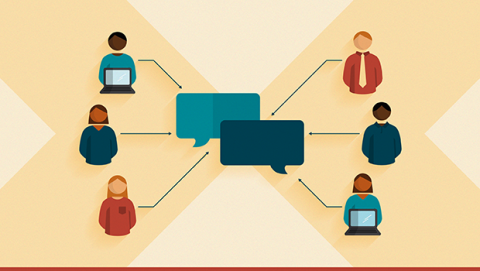Some IT organizations can now be described as an hourglass, with a large number of Baby Boomers (until recently the most populous generation), a large number of Millennials (who overtook Baby Boomers in numbers in 2016), and between the two, a smaller number of Generation X employees.
If you’re a CIO, how do you balance the needs of younger employees with those of older ones? When hiring new employees, how should recent grads fit in? How do you make the most of what each generation has to offer the team?
For answers, we turned to Bill Fandrich, senior vice president and CIO of Blue Cross Blue Shield of Michigan. Here’s his advice for dealing with multiple generations in IT:
1. Hire the person, not the skill set
“The IT industry advances rapidly, so it can be easy to focus on the latest and greatest technology, seeking out talent that has expertise in the newest shiny objects, platforms, and programs,” Fandrich says. “But ultimately, we have to remember it is our employees, not the technologies, that are our greatest assets.”
[ Want more advice on hiring a top-notch IT team? Read 5 tips to recruit IT talent – without big-league perks. ]
With that in mind, he advises IT leaders to avoid chasing recent graduates whose skills revolve around the latest bleeding-edge technology. “Their application is inherently fleeting,” he explains. “It’s far more important to hire savvy business professionals at every career level who can apply new technologies to address business needs, year after year, even decade after decade. The technology is always changing, but the job remains the same.”
Besides, he adds, you don’t need to be young or a recent graduate to excel at the latest technology. “We have a number of employees on our team who have been with us for years and pride themselves on staying up-to-date on the latest and greatest.”
2. Have employees change roles frequently
Most large organizations use a combination of new and legacy technology, which means they need employees with a range of expertise. “In any role, dependence on only one skill limits your opportunity to add value to the company,” Fandrich says. “It is critical for IT employees to grow their skill base and experiences to be able to keep up with ever-changing technology.”
Changing employees’ roles frequently is one way to make sure they remain both current and flexible. “To ensure that skills remain current, make sure individuals have the opportunity to move into different roles in the organization, take temporary assignments, work in different types of areas,” Fandrich advises, “for example, project vs. application management.”
3. Provide educational opportunities
One big worry for many CIOs is that as Baby Boomers retire, they’ll take their knowledge about legacy systems with them. But Fandrich believes a well-managed IT organization can weather this transition effectively. “Certainly there is institutional knowledge lost when people retire, but the industry will go on,” he says. “IT productivity tools, software, cloud, and digital are dynamic, and the employees that meet those needs are too. It is a part of our job as IT leaders to evolve with the industry.”
It helps, he says, to create an environment where tech employees want to work. “We can avoid IT management crises by creating the right culture and working environment for our employees to grow and further develop their skill sets, which attracts and retains talent,” he explains. “Creating opportunities for ongoing education and professional development will help keep skills sharp at all levels and avoid lags in talent that could be detrimental to the company in the long run.”
Besides, he says, these days CIOs are less likely to be dependent on any given employee’s skill set. “There are more and more third-party partnership options on the market every day. This helps us, as IT leaders, figure out which skills are critical for us to develop internally and which skills are best to partner for.”
4. Be careful not to pre-judge
What are the biggest mistakes Fandrich sees CIOs making around different generations in IT? “A significant pitfall in dealing with generational diversity in IT is making assumptions,” he says. “Not every recent college grad will be well-versed in the latest technology, and not every veteran employee is decades behind in technological knowledge.”
To avoid making wrong assumptions about employees’ skills, he says, you must get to know them. “This could entail regular one-on-one check-ins to get a sense of their skill levels and needs, or even creating office-wide assessments that help leaders gauge knowledge gaps,” he says. “Another effective strategy is to implement cross-generational peer mentorship so that employees learn to understand each other. That way, they are accountable in helping each other learn and succeed.”






